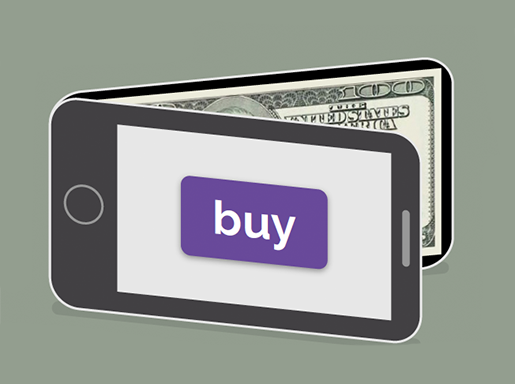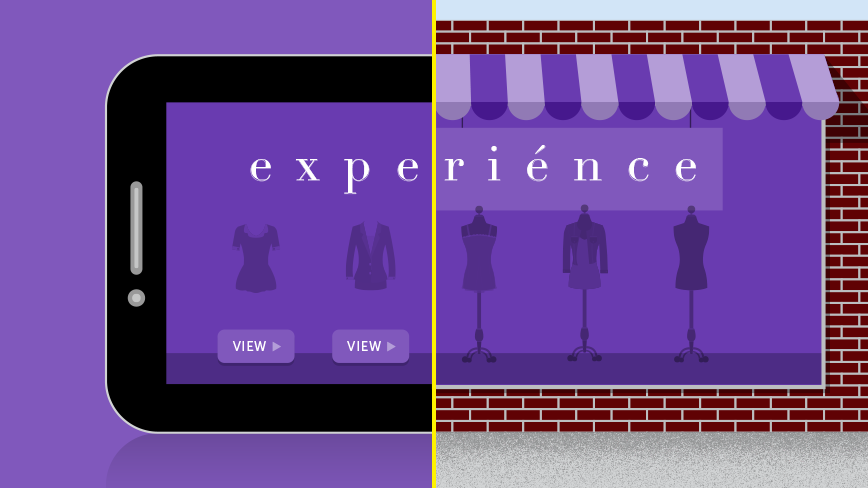The proverb has changed: The mobile customer is always right.
In typical fashion, I was discussing my latest home décor venture last weekend with one of my closest friends and how it landed me in Target (or ‘Tar-zhay’ for my fashionistas). My friend then said something earth shattering to me, “I was in Target yesterday and I was going to buy Emma [her daughter] a toy for her birthday. When I was in the aisle of Target, I then realized I could buy the toy off Amazon for a better bargain.” She then placed the order for the toy on Amazon– right in the middle of a Target store.
As a friend, I thought it was great that she got the better deal. As a marketer, my mind was blown by how an app could blow up the consumer experience.
Most people are now visiting the top food and restaurant sites exclusively from their mobile devices. For example, DunkinDonuts.com has the main percentage of mobile use from the latest comScore survey from the Retail-Food and Lifestyle Food categories- stating that 92.2% of all visitation happened on a smartphone or tablet. However, it isn’t even leading the pack. Over 15 million unique visitors flocked to the Starbucks app in May 2015. With an 8.3% reach of the total mobile population, Starbucks’ app is expanding the barista experts’ share of the marketplace.
Why and how is this happening? Benefit. Convenience. Association. [a.k.a. Me. Me. Me.]
The first click into an app should equal the first step into a flagship
Mobile apps like Nordstrom, Starbucks, and Regal Cinemas, evoke the brand’s identity at first click. A seamless experience in an app is modeled like the floors of a department store, giving customers the information they need so that they return with confidence and begin referencing the app ‘on-the-go’ without competitors interfering in their purchasing path.
Your app should engage consumers and connect them with great experiences like the ones they’ve had in store locations. For example, in July 2015, Starbucks announced an elevated digital news experience for the Starbucks mobile app. As part of the agreement, The New York Times’ top news of the day, as well as, a selection of other articles is available for free via the app for My Starbucks Rewards loyalty members. These customers also have the opportunity to earn “Stars” through paid digital and print subscriptions to The New York Times.
“We have proudly sold millions of copies of the paper in Starbucks stores for more than a decade, and are excited to bring this experience to the next level by enabling Starbucks’ loyal customers to take the best of The New York Times with them wherever they go, whenever they want it.” said Howard Schultz, Chairman and CEO of Starbucks.
Keep it simple
Just because you have an app, doesn’t mean you need it to meet every need. Think of the basic conveniences your consumer would appreciate and benefit from in the mobile app:
- Brand awareness
- Rewards programs
- Discount incentives
- Easy transaction experiences
Almost every brand from Chop’t to your local market has a mobile loyalty program. With waves of shoppers signing up, you need to make sure yours stands out because mobile users can easily get turned off in the process. Keep this one fun fact in mind when identifying your goals for your mobile app, U.S. internet users belong to more than 13 loyalty programs on average — according to Bond Brand Loyalty data analyzed by eMarketer — but only 50% of users are active members.
Conversions shouldn’t require [leather] wallets
 We have all seen the stickers for Apple Pay, Google Wallet, and PayPal on a Saturday morning while running errands. According to Annalect’s recent research study, “the mobile wallet can offer consumer extras in order to entice them to a new form of payment—rewards programs, coupons, gift cards, and promotions. Price comparisons and access to loyalty points are the features consumers are most interested in.” Earlier this year, CEO Tim Cook claimed two out of every three touchless purchases made in the U.S., as of December, routed through Apple Pay. From a mobile app experience, utilizing these services is the Holy Grail, especially with mobile payments reaching $3.5 billion last year and on track to triple that by the end of next year.
We have all seen the stickers for Apple Pay, Google Wallet, and PayPal on a Saturday morning while running errands. According to Annalect’s recent research study, “the mobile wallet can offer consumer extras in order to entice them to a new form of payment—rewards programs, coupons, gift cards, and promotions. Price comparisons and access to loyalty points are the features consumers are most interested in.” Earlier this year, CEO Tim Cook claimed two out of every three touchless purchases made in the U.S., as of December, routed through Apple Pay. From a mobile app experience, utilizing these services is the Holy Grail, especially with mobile payments reaching $3.5 billion last year and on track to triple that by the end of next year.
According to a report by CreditDonkey, (who sources the Federal Reserve, CNET, & others here) 20% of customers who checked prices online with their phone, made the purchase online, not in the physical store. And loyalty partnerships like American Express’ Plenti, which combines points across retailers, and platforms like Belly that host customized programs across a variety of retailers, are helping to reduce the wallet burden.
For more information on the Mobile Wallet, download Annalect’s research report here.
You have the knowledge, leverage it
The consumer doesn’t want you selling their information, but remember – they like your brand and products for a reason. With a well-designed mobile app, you have the data knowledge to remind them of why they love your brand and its mission on a daily basis. For example, French cosmetics retailer Sephora collects facts and abstracts insights about clients to offer a loyalty program with curated selections, known as the Beauty Insider program. The program offers its members popular products, exclusive information on sales and even informs them when they are only a few points away from bonus buys. The company also sends customers personalized gifts on important occasions, such as birthdays.
So whether you are spinning up an app for the local organic coffee shop or high end furniture company that started in a garage, do not just think about how you can improve the business based on location, but look to the power available to you at your fingertips.
This article is part one of a three part series. Stay tuned for parts two and three on best practices for user experience and measurement of apps.

